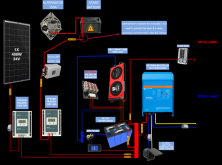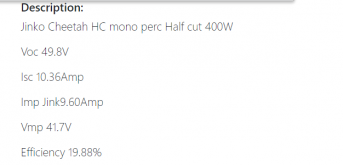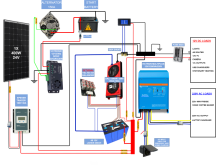juanmijm
New Member
- Joined
- Nov 2, 2020
- Messages
- 74
I am preparing the electrical installation for my camper van, I have created my first installation diagram, I would appreciate your opinions about it.

The fact of putting a dcdc and mptt to charge from the alternator is because I already have those devices, so if that works it could save me 160 / 280e which is worth a booster.
the balancer is an option, I don't know if I could leave it there always plugged in, probably not necessary, probably leave only the plug, to be able to put it manually in case it is necessary.
I also don't know if the shunt is in a good position, and if I have to connect the chassis GND with the ground of the AC sockets
And the last doubt is that I could put the alternator charge circuit to be able to operate remotely from the dashboard
Thanks for yours replies.

The fact of putting a dcdc and mptt to charge from the alternator is because I already have those devices, so if that works it could save me 160 / 280e which is worth a booster.
the balancer is an option, I don't know if I could leave it there always plugged in, probably not necessary, probably leave only the plug, to be able to put it manually in case it is necessary.
I also don't know if the shunt is in a good position, and if I have to connect the chassis GND with the ground of the AC sockets
And the last doubt is that I could put the alternator charge circuit to be able to operate remotely from the dashboard
Thanks for yours replies.
Attachments
Last edited:









